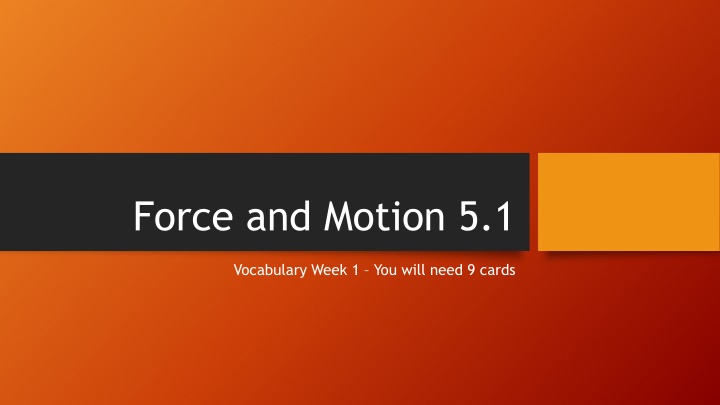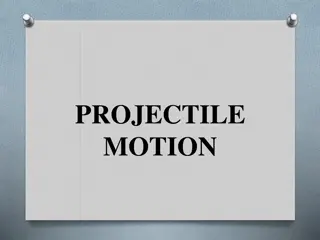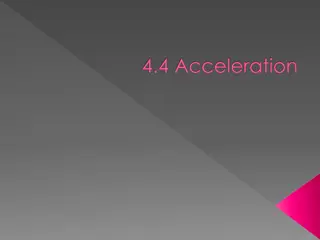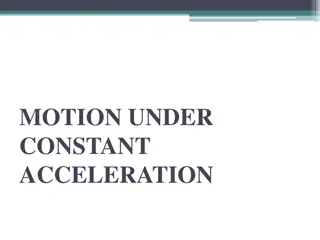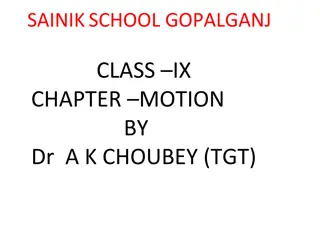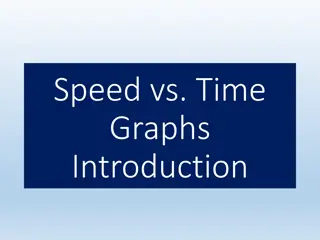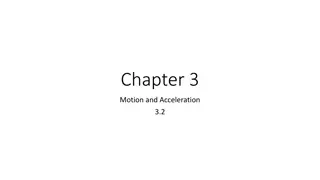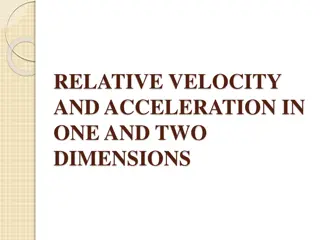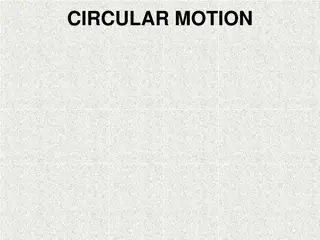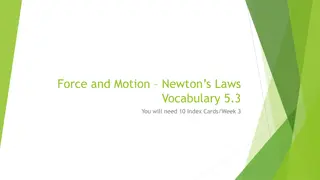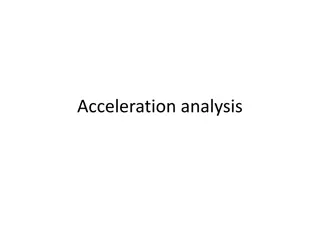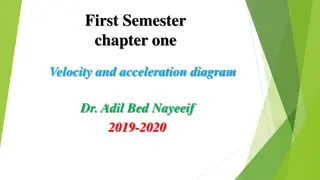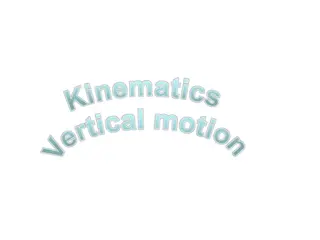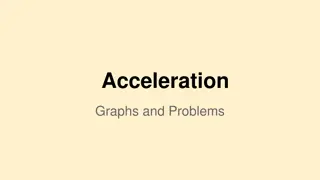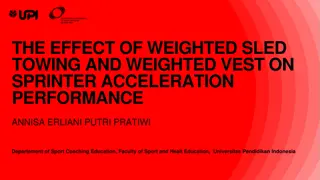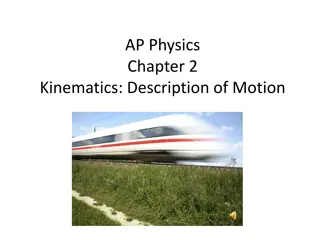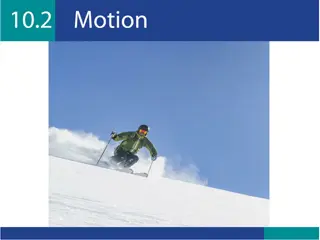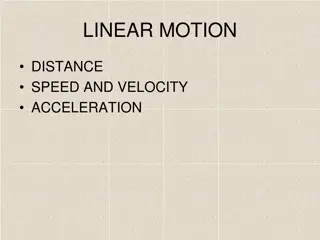Force and Motion 5.1 Vocabulary - Understanding Velocity and Acceleration
Dive into the world of force and motion with this vocabulary set focused on key concepts such as speed, average speed, instantaneous speed, constant speed, velocity, and acceleration. Explore the relationship between velocity and acceleration as you learn about the rate at which objects move, change direction, and the forces that drive motion.
Download Presentation

Please find below an Image/Link to download the presentation.
The content on the website is provided AS IS for your information and personal use only. It may not be sold, licensed, or shared on other websites without obtaining consent from the author.If you encounter any issues during the download, it is possible that the publisher has removed the file from their server.
You are allowed to download the files provided on this website for personal or commercial use, subject to the condition that they are used lawfully. All files are the property of their respective owners.
The content on the website is provided AS IS for your information and personal use only. It may not be sold, licensed, or shared on other websites without obtaining consent from the author.
E N D
Presentation Transcript
Force and Motion 5.1 Vocabulary Week 1 You will need 9 cards
S8P3a Determine the relationship between velocity and acceleration.
Speed The speed of an object is the distance the object travels per unit of time. the rate at which someone or something moves or travels
Average Speed The speed of most moving objects is not constant. Speed of an object may change based on the terrain on which it travels. To calculate average speed, divide the total distance traveled by the total time. Example of average speed: 45km/3h = 15 km/h
Instantaneous Speed The Rate at which an object is moving at a given instant in time. Example: The speedometer of a car reveals information about the instantaneous speed of your car. It shows your speed at a particular instant in time. On the average, your car was moving with a speed of 25 miles per hour. https://www.khanacademy.org/science/physics/one-dimensional- motion/displacement-velocity-time/v/instantaneous-speed-and- velocity
Constant Speed Speed that does not change; it stays constant. https://www.youtube.com/watch?v=_DtDCBHEM1k
Velocity Speed in a given direction. The rate at which an object changes its position. Ex. If you know the velocity of a storm if you know it is moving 25mph eastward.
Velocity Continued The equation or formula for velocity is similar to speed. To figure out velocity, you divide the distance by the time it takes to travel that same distance, then you add your direction to it.
Acceleration The rate at which velocity changes. A change in velocity can involve a change in speed or direction, or both. In science it refers to increasing speed, decreasing speed, or changing direction.
Force Using energy to do work. Examples: Pushing or pulling.
Motion An object is in motion if its distance from another object is changing. https://www.youtube.com/watch?v=LEs9J2IQIZY
Displacement * How far out of place an object is; it is the object's overall change in position. An object's change in position considering its starting position and final position.
Complete Coach Book Lesson 18 https://quizlet.com/_32r7lp
